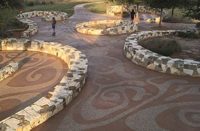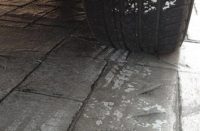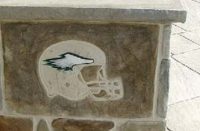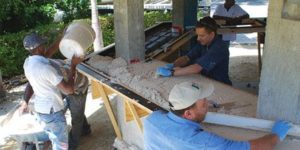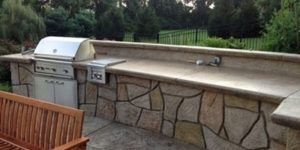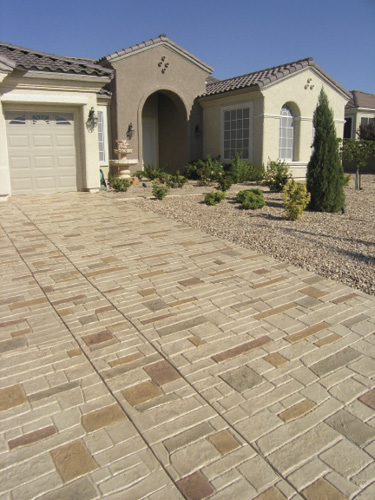
When working with stamped concrete overlays, experts caution you to keep your eye on weather and temperature conditions. Weather effects on concrete overlays can adversely affect the outcome you are desiring.
“A warm temperature and dry conditions will cause the product to dry too quickly. Cold and wet make it dry slower,” says Paul Koury, president of Westcoat Specialty Coating Systems. “We have accelerator additives to speed the dry up and decelerators to slow it down” as part of the Westcoat Stamp-It System.
Try to avoid working the overlay job if it’s below 50 F or warmer than about 85 F, experts warn.
“Put it down in the morning” for maximum sun protection, advises Jim Boyce, operations manager at Rhino Concrete. “You’re only putting it down a quarter to three quarters of an inch thick. Depending on the temperature, you’re going to have to get to it in a half hour or an hour at the most. It’s a lot different than working with regular concrete. It’ll harden quick. If you’re not really careful, you’re going to be scraping it off and reapplying.”
Some weather tips are very simple. “Put ice in the mixes to slow down the drying a bit ;and, of course, keep your material in the shade,” says Koury.
Also look out for strong wind in the forecast. It can throw around dust and affect curing times.
Working inside carries a whole other set of challenges. “You have to do a lot more planning,” says Boyce. “You’ve got to set up your mix station outside as close as possible to the job and make sure you won’t trap yourself in a corner.”
Proper lighting is important, too, says Boyce. “If you don’t have the right light when you’re stamping you might mess up the stamping impressions because you’re seeing shadows that aren’t there. Also, you’ll be using different sealers on indoor jobs than outdoors — water-based rather than acrylic sealers. So make sure you’re showing accurate sample boards to the customer because you won’t get the same look with a different sealer. You won’t get the same shine unless you move to a urethane when working inside.”
Boyce also cautions to turn off HVAC systems and ceiling fans since they can dry out the overlay too quickly or mix in dust — just like outdoor work on a windy day.
